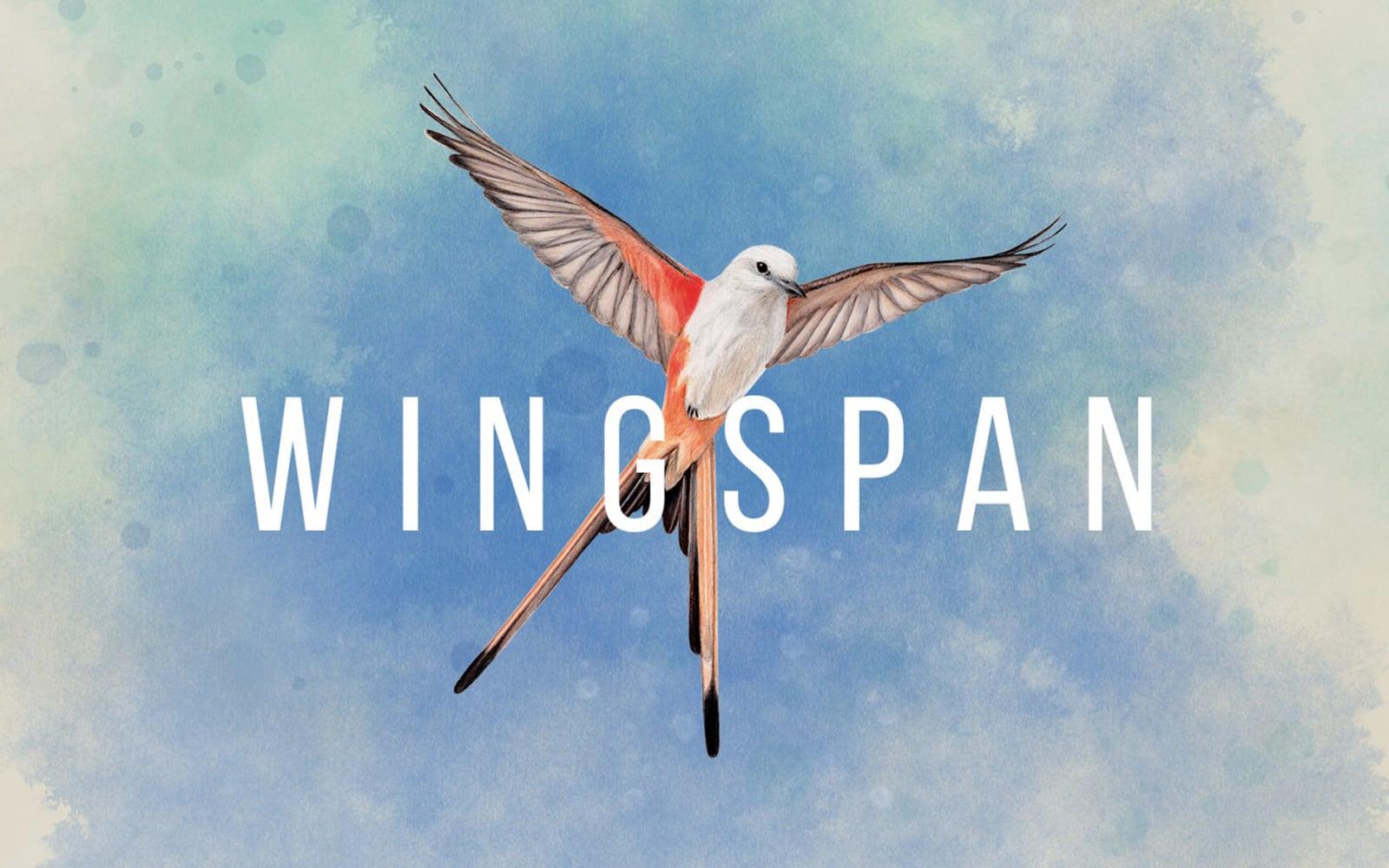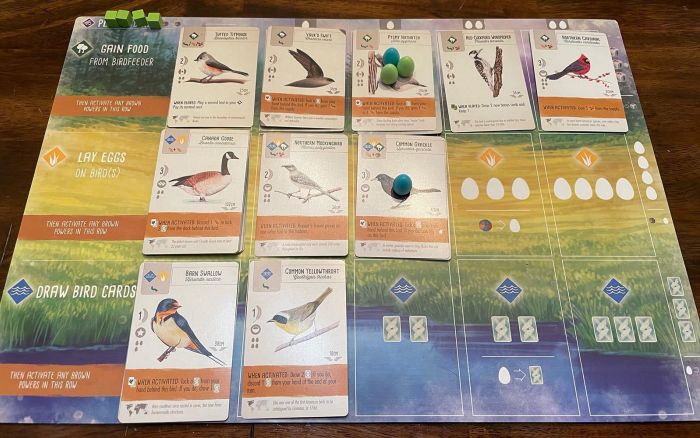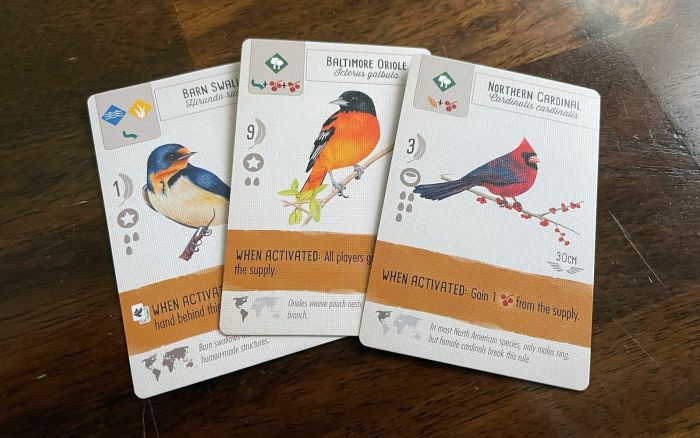Elizabeth Hargrave’s Wingspan Lets Your Tabletop Take Flight

Our family got on something of a birding kick this past summer as part of our homeschool curriculum. Among other things, this meant frequent excursions to various parks and nature centers around Lincoln. Our favorite destination quickly became the Spring Creek Prairie Audubon Center, which is located just a few miles outside Lincoln. The center contains several miles’ worth of walking trails from which you can observe a wide variety of bird species making their homes in the gorgeous Nebraska countryside.
While it’s not nearly the same as walking through the tall prairie grass on a clear, crisp Nebraska autumn day, Elizabeth Hargrave’s Wingspan does give you and your family an opportunity to create your own bird habitats from the comfort of your dining room table. Wingspan does have a learning curve — I wouldn’t recommend it for young children (who will almost certainly be enamored by its various pieces and components, more on those in a bit) — but after a few rounds of getting into the game’s rhythm, you’ll be well on your way to building your own wildlife preserve.

I won’t go into great detail concerning Wingspan’s gameplay but I do want to cover some of the basics. (For a more detailed introduction to the game’s rules, watch this video.) For starters, players have four main actions in Wingspan:
- Drawing bird cards which can be potentially played to build up your preserve’s population.
- Playing individual bird cards in your preserve’s various habitats (e.g., forest, grasslands, wetlands).
- Laying eggs that can be used to “pay” for more birds.
- Gaining food to ensure that birds will live and thrive in your habitat.
On the surface, this seems straightforward enough. However, since you can only play one action per turn, you’ll often find yourself torn when deciding which action to play. Will you play a bird card now, or will you use your turn to gain more food in the hopes of playing more cards in the future? Or will you take a turn to lay some eggs, which can also be used to get more birds in your preserve?
What’s more, each bird has a unique ability that’s inspired by its real-world characteristics and instincts. Some birds have abilities that can be triggered when you first place them in your preserve while some have abilities that can be chained together with the other birds in their habitat. For instance, one bird may allow you to lay additional eggs or gain more food while another lets you draw additional bird cards. In addition to increasing the game’s strategic aspect, this mechanic also sells the idea that you’re building a diverse and inter-connected ecology in which multiple species affect each other.
Several other factors can affect your strategy, too. In addition to the regular bird cards, there are “Bonus” cards that give you points for encouraging certain attributes in your habitat, like birds of a specific size or eggs in a certain type of nest. As you acquire “Bonus” cards throughout the game, they can easily influence which bird cards you play, where you lay eggs, etc. And finally, each round that you play has an overall goal (e.g., having more than a certain number of birds in your wetland habitat) that can also affect what you choose to do on your turns.
All of these different layers can make Wingspan’s gameplay a bit overwhelming at first (as I mentioned earlier). But our family found ourselves slowly getting used to the game’s rhythm after 4 – 5 rounds, which allowed us to focus on better strategy and decision-making. And speaking of strategy, one aspect that my wife and I really appreciate about Wingspan is that it doesn’t force you to play at the expense of the other players. Although Wingspan certainly encourages competition and there will be a winner at the end of the session, you’re not trying to attack other players or otherwise make them fail in order to ensure your victory. Rather, Wingspan simply encourages you to make the best possible habitat that you can.

But even if you find yourself stymied by Wingspan’s rules and gameplay, you’ll still probably find yourself enamored by its design and construction. Put simply, Wingspan is a gorgeous game. Everything in the set — like the little multi-colored eggs, the wooden dice used to determine your food supply, and the birdfeeder-themed dice tower painted by Beth Sobel — is detailed and well-crafted, and gives the game a nice tactile feel.
Then there are the bird cards themselves, which feature beautiful, vivid paintings by Natalia Rojas and Ana Maria Martinez Jaramillo along with interesting and educational facts about each bird. So even as you’re waiting for your next turn, you can learn a thing or two. For instance, did you know that trumpeter swans are North America’s heaviest bird, or that turkey vultures defend themselves with projectile vomit? I didn’t, not until I played Wingspan, that is.
Since its release in 2019, Wingspan has become a huge critical and commercial success. It won the prestigious Kennerspiel des Jahres award in 2019 and has sold more than 300,000 copies to date. Stonemaier Games has since released several expansion packs with new birds and additional powers and abilities and a digital version is available on Steam for Mac and Windows. And this April, HarperCollins will publish Celebrating Birds, an “interactive field guide” that takes Wingspan’s gameplay out into the real world.
Regardless of how you choose to play it, though, Wingspan is an enjoyable and thoughtfully designed game that uses nature-themed rules and beautiful artwork to inspire curiosity and wonder about our feathered friends.